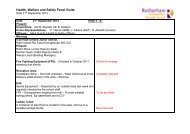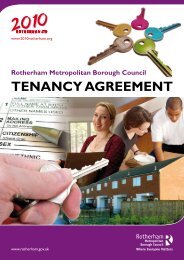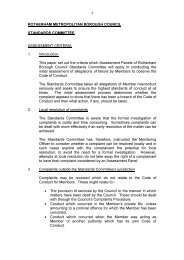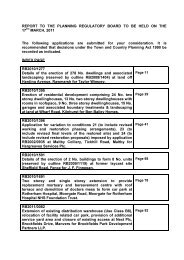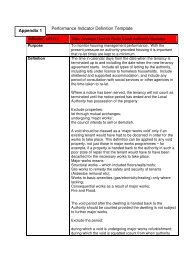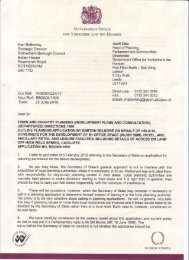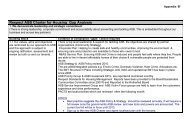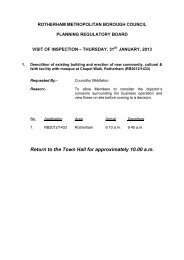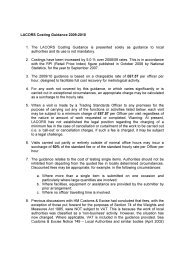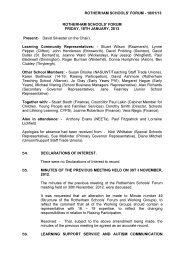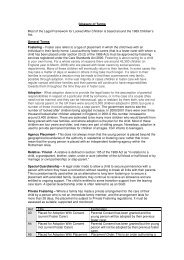M1 J32 to J35a Managed Motorway Consultation Document - assets ...
M1 J32 to J35a Managed Motorway Consultation Document - assets ...
M1 J32 to J35a Managed Motorway Consultation Document - assets ...
Create successful ePaper yourself
Turn your PDF publications into a flip-book with our unique Google optimized e-Paper software.
<strong>M1</strong> <strong>J32</strong> <strong>to</strong> <strong>J35a</strong> <strong>Managed</strong> Mo<strong>to</strong>rway<br />
<strong>Consultation</strong> <strong>Document</strong><br />
Q. Is the introduction of variable manda<strong>to</strong>ry speed limits likely <strong>to</strong> be effective<br />
The introduction of variable manda<strong>to</strong>ry speed limits on sections of the M6 and M42<br />
round Birmingham have shown a reduction in congestion and improved traffic flows<br />
resulting in more reliable journey times. Evidence also supports the safe operation of the<br />
hard shoulder as a traffic lane. A three-year safety report in<strong>to</strong> the M42 <strong>Managed</strong><br />
Mo<strong>to</strong>rway scheme showed that traffic collisions have reduced.<br />
Experience from these schemes suggests that there is scope <strong>to</strong> further reduce both the<br />
capital and operating costs, whilst continuing <strong>to</strong> meet congestion reduction objectives<br />
and without compromising overall safety for road users and those who work on the road.<br />
Q. Why have a variable speed limit Why not have a fixed speed limit<br />
A. By varying the manda<strong>to</strong>ry speed limit the Highways Agency can manage the flow of<br />
traffic more effectively. The speed limits displayed on the mo<strong>to</strong>rway will take account of<br />
prevailing traffic conditions with the aim of ensuring the smooth flow of traffic. Variable<br />
speed limits are a key feature of managed mo<strong>to</strong>rways - which is about modernising the<br />
operation of our mo<strong>to</strong>rways and finding the best solution for different parts of the<br />
network.<br />
Q. How does it work<br />
A. The variable manda<strong>to</strong>ry speed limits and messages shown on the variable message<br />
signs are au<strong>to</strong>matically displayed in response <strong>to</strong> the level of congestion or traffic<br />
queues. Sensors in the road surface detect the speed, volume and flow of traffic which<br />
then calculate the optimum speed <strong>to</strong> keep traffic moving, reducing the level of ‘s<strong>to</strong>pstart’<br />
traffic which leads <strong>to</strong> congestion. Drivers see the current speed limit displayed on<br />
electronic signals on the overhead gantries and variable message signs located in the<br />
verge. The speed limits can also be manually set by control room opera<strong>to</strong>rs if required.<br />
Q. When are the variable speed limits likely <strong>to</strong> become manda<strong>to</strong>ry<br />
A. We are hoping <strong>to</strong> implement the variable manda<strong>to</strong>ry speed limits in 2015.<br />
Q. So what is the point of the consultation<br />
A. The Highways Agency is committed <strong>to</strong> effective consultation and complies with the<br />
Government’s <strong>Consultation</strong> Principles. Effective consultation with affected stakeholders<br />
brings <strong>to</strong> light valuable information which we are able <strong>to</strong> use <strong>to</strong> design effective solutions<br />
and mitigate any concerns.<br />
Following the consultation period, responses will be issued where appropriate and a<br />
summary report compiled which will provide an analysis of the responses and provide<br />
justification for the selected option.<br />
26



